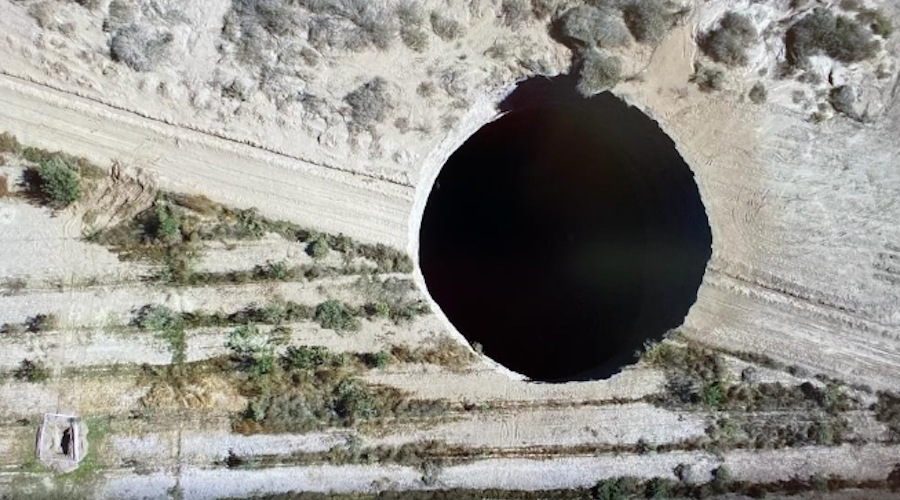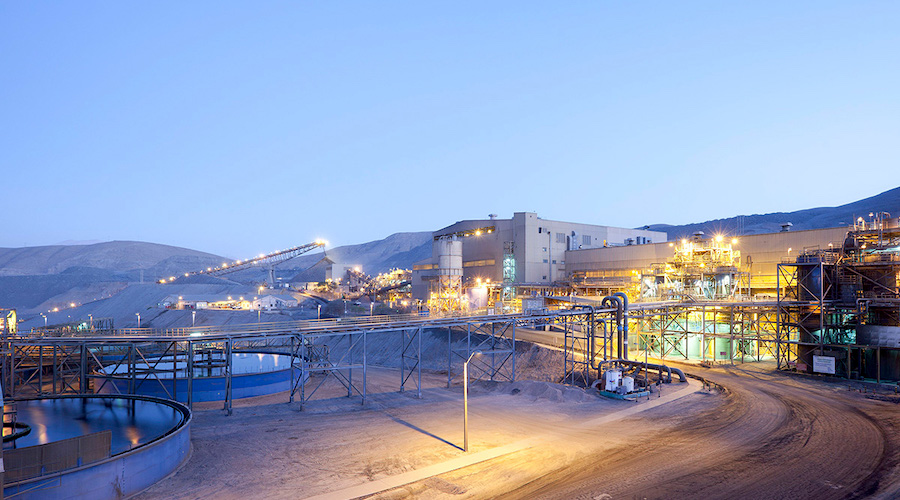Cecilia Jamasmie | August 19, 2022

Sinkhole at the Alcaparrosa mine. (Image by Sernageomin, Twitter).
Lundin Mining’s Chilean unit Ojos del Salado is facing charges after authorities said they were able to “confirm” the causes of a massive 36.5-metre in diameter sinkhole at the company’s Alcaparrosa copper mine were tied to mining “overexploitation”.

Minister of Mining Marcela Hernando told local TV station T13 on Thursday night that the government had found the company has extracted ore beyond the permitted limits, especially around a cave located under the sinkhole area.
“The Gaby 4 cave was designed and authorized for an exploitation of 400,000 tonnes and, based on data obtained in the investigation, 300,000 tonnes have already been extracted and at least another 300,000 tonnes remain there,” she said after leading an inter-ministerial meeting.
Hernando said the National Geology and Mining Service, Sernageomin, had “enough data to prove there have been mining activities” by the sinkhole, adding that authorities did not rule out impacts on the local aquifer. She said that point remains under investigation.
The minister’s comments come on the heels of Lundin Mining’s statement related to new cracks detected in the ground near the sinkhole, some 665 kilometers to the north of the capital Santiago.
“Mining operations at the Alcaparrosa mine remain suspended, and the status of the sinkhole has not changed materially since detection,” the Canadian miner said.
Its Ojos del Salado unit, in turn, noted the new cracks said to have appeared by the sinkhole were “unrelated to the hole or any mining activity”.
“The cracks detected on land near the Alcaparrosa mine are an unrelated incident to the sinkhole and we stress that there are no underground mining operations or populated communities in the nearby area,” Lundin said in an emailed statement.
“The source of their formation is currently under study,” the company added.

Alcaparrosa is one of two underground mines that make up the Ojos del Salado operation, within the Candelaria complex (pictured).
(Image courtesy of Minera Candelaria.)
The discovery of the enormous crater in Chile’s northern Atacama region has grabbed headlines around the world and fuelled speculation about possible causes.
Following the immediate halt of operations at Alcaparrosa, the SMA issued urgent and transitory” measures while authorities conduct an ongoing investigation.
The government had said it intended to bring harsh penalties against those responsible for the sinkhole, suggesting it could be linked to over-mining.
Lundin said it continued its monitoring and technical analysis in the area to identify the factors that led to the formation of the infamous sinkhole.
The Toronto-based miner owns 80% of the property, while the remaining 20% is held by Japan’s Sumitomo Metal Mining and Sumitomo Corporation.
Sinkholes are pits that form over areas where water gathers underground without external drainage, causing the water to carve out subterranean caverns.
These cavities also form regularly near old and active mines, where large amounts of rock and ore have been extracted, studies have shown.
Sinkholes often form gradually over many years, but can also open quite suddenly, taking cars, homes and streets down with them.
The discovery of the enormous crater in Chile’s northern Atacama region has grabbed headlines around the world and fuelled speculation about possible causes.
Following the immediate halt of operations at Alcaparrosa, the SMA issued urgent and transitory” measures while authorities conduct an ongoing investigation.
The government had said it intended to bring harsh penalties against those responsible for the sinkhole, suggesting it could be linked to over-mining.
Lundin said it continued its monitoring and technical analysis in the area to identify the factors that led to the formation of the infamous sinkhole.
The Toronto-based miner owns 80% of the property, while the remaining 20% is held by Japan’s Sumitomo Metal Mining and Sumitomo Corporation.
Sinkholes are pits that form over areas where water gathers underground without external drainage, causing the water to carve out subterranean caverns.
These cavities also form regularly near old and active mines, where large amounts of rock and ore have been extracted, studies have shown.
Sinkholes often form gradually over many years, but can also open quite suddenly, taking cars, homes and streets down with them.
No comments:
Post a Comment